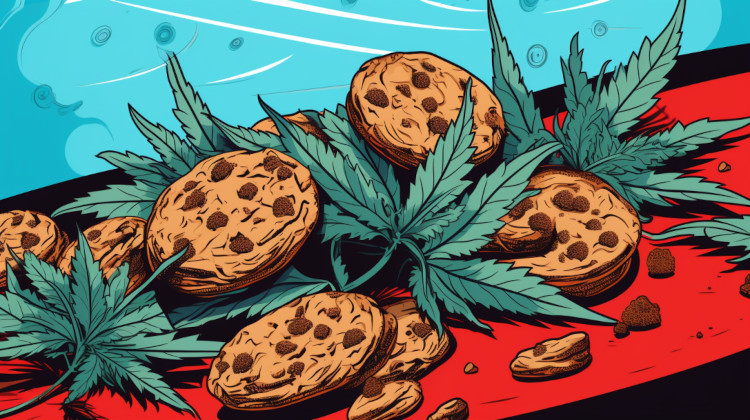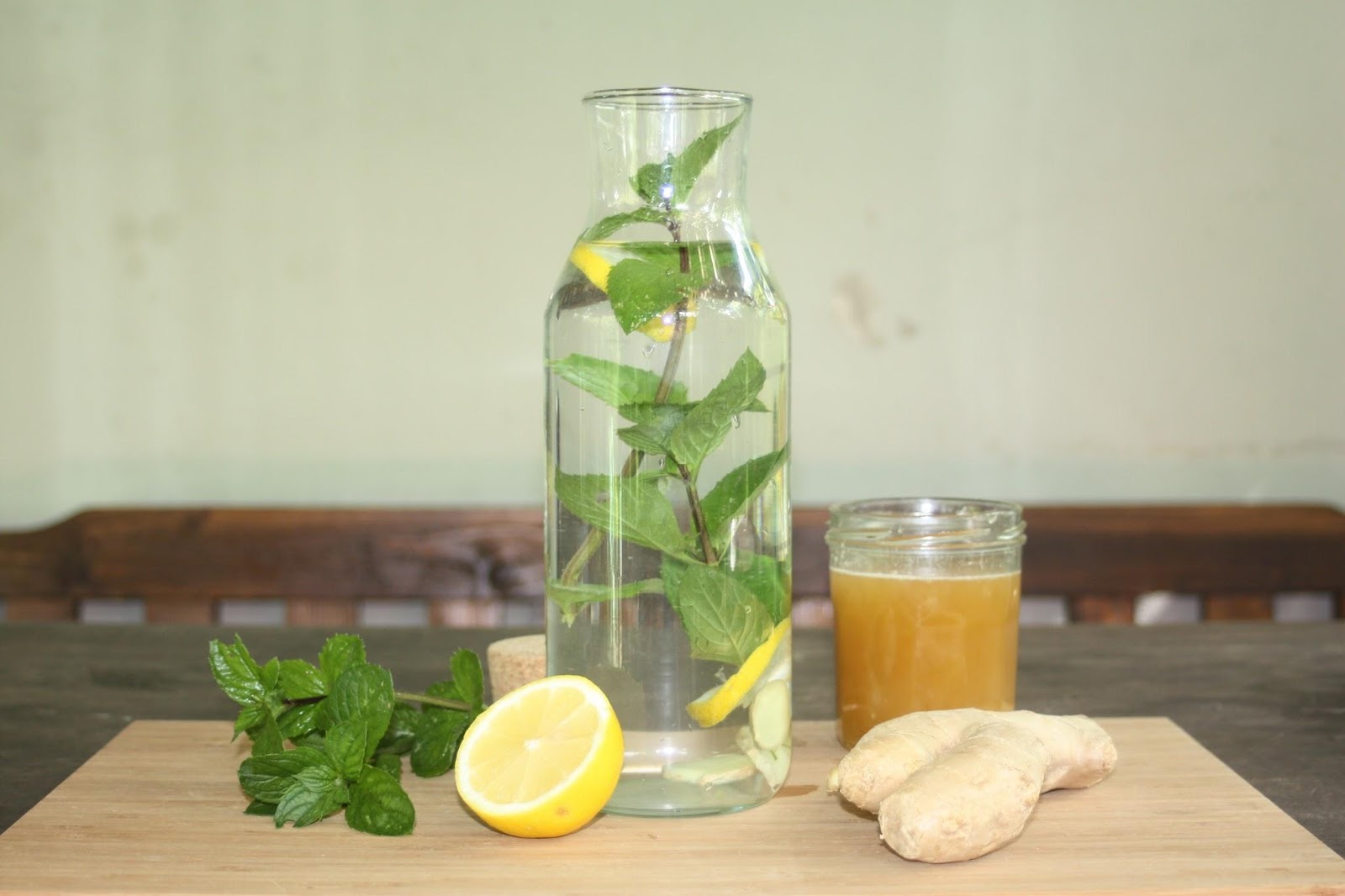Among the many different cannabis consumption methods, edibles are one of the most popular. Edibles are easy to dose, can quickly be picked up at a dispensary, and even give you the option to make them yourself. As cannabis becomes widely popularized, more and more edible products are being created, each providing its own set of benefits.
For many families, breastfeeding is an important part of their daily routine with their baby. Various factors can affect a baby’s development, so it’s important to speak with your pediatrician when you have questions and get the answers you need to make informed decisions.
When it comes to edibles and breastfeeding, there are some safety concerns to consider. As always, it’s important to do your own research and make decisions that you and your family feel comfortable with. Reach out to a medical professional to get more information about your situation.
What Exactly are Edibles?
Edibles are a type of product that’s eaten and contains cannabis. The majority of edibles will have THC in them, while some will also have CBD or other cannabinoids. There are a variety of different types of edibles, including gummies, cookies, capsules, oils, and similar options.
Many people choose to buy edibles from a dispensary because they’re more trustworthy, and you can be sure that they were manufactured in a safe way. However, some people prefer to buy the edible components separately and then cook them up at home. You should choose whichever option makes you feel most comfortable and confident.
Edibles come in a variety of different dosages. If you’re new to trying edibles, consider an option like a gummy that will have a precise amount in each serving. Trying something like a cookie can also be a good option, but it can make it harder to understand exactly how much weed you consume.
There are a variety of different reasons why some individuals prefer edibles compared to other cannabis products. Many people like how easy and discrete they are, compared to smokable options that can be more obvious. Another benefit of edibles is that they most likely won’t impact the lungs.
If you’re going to be consuming edibles, it’s important to make sure that they contain trusted cannabis that comes from a reputable source. Using cannabis that’s old or laced with other substances may result in a bad high or adverse effect, so it’s best only to use edibles that are made with quality cannabis.
Purchasing edibles can be overwhelming, due to all the different options on the market. If you’re unsure where to begin when buying edibles, consider thinking about the benefits you want and then start your research from there. There are a variety of different benefits that can come from edibles, such as helping with sleep or relieving stress. Considering these factors can be an excellent way to narrow down your options.
Edibles and Breastfeeding: The Effects on Lactation

Since cannabis was only recently legalized, a lot of research still needs to be done. However, some research has been conducted to help you make an informed decision about edibles and breastfeeding.
Before discussing how cannabis could impact your breastfeeding baby, it's important to cover how cannabis might impact breast milk itself. Some research has shown that even using cannabis once may impact various concentrations of hormones in breast milk.1 Clearly, there is a need for more research to understand the long-term effects of cannabis in breast milk.
It’s likely that the more an individual uses cannabis, the more their breast milk may be impacted. With that being said, even occasional use may have an impact on breast milk, so it’s important to keep that in mind if you’re considering using cannabis.
Research has also found that cannabis may actually lower milk production. If you already have a low milk supply, cannabis may not be the right option for you. It’s important to note that this research was only done in the first few weeks of the postpartum period, so there’s a growing need for more information to learn about the lasting effects that cannabis might have on breast milk.
Currently, there isn’t significant research that suggests one strain or terpene is better for those who are breastfeeding. This is likely because there aren’t any specific benefits that can come from using cannabis while breastfeeding.
Edibles and Breastfeeding: Is it Safe for the Baby?
The substances a mother consumes are often transferred to the baby through breast milk, which remains true for cannabis. It has been found that babies who are exposed to THC through breast milk do metabolize the substance, meaning that it’s transferred to them, and their body processes it. Because of this, it’s incredibly important to consider any THC use conducted by the individual breastfeeding, as even a small amount of THC can be transferred to the baby.
While there is a need for more research to be done to understand the possible effects that could come from having THC in breast milk, some research has found that it could potentially impact the baby’s motor abilities.2
The infant period is crucial to development, especially in the brain. It’s important to consider the potential effects that could result from using cannabis during lactation. There hasn’t been much research that’s aimed to understand the effects of cannabis on a baby’s developing brain. It’s possible that cannabis exposure during infancy could lead to negative impacts on memory and attention, as well as impulse control.3 This is why some warn against using cannabis while breastfeeding.
Delta-8 is an option that many people are trying, but it only recently became more popular. Due to this, research hasn’t been done to understand the potential implications of this compound on a baby who receives it through breast milk. However, delta-8 is similar to traditional THC, so the effects would likely be similar.
Smoking vs. Edibles: Is There a Difference?

With all the different cannabis consumption methods, is there a difference between smoking and edibles while breastfeeding? When it comes to edibles and smokable products, THC is still entering the body and systems of the breastfeeding individual. It’s likely that there aren’t any differences in the breast milk itself between consumption methods.
While the method of consumption likely doesn’t play a significant role in the transfer of THC to breast milk, it is important to think about the dosage. Higher doses of THC are likely to transfer in higher amounts to breast milk and stay in the body longer.
How Long Do Edibles Stay in Your Breastmilk?
There are a variety of different factors that can influence how long edibles stay in breast milk. An individual’s metabolism, the frequency, and the dosage they use are some of the most significant factors in determining the length of THC in breast milk.
There is some conflicting research when it comes to this question, with some sources saying THC can stay in breast milk for up to six weeks and other sources claiming it will stay for only a few days.4
If you want to use cannabis but don’t want your baby to be exposed through breast milk, then there are a few different things you should consider as far as how long you should wait after use until you can breastfeed again. If you’re an occasional user taking lower doses, you should probably wait a few days at least. However, if you’re a chronic user, you’ll most likely want to wait six weeks to ensure your body has time to cycle it out of your system.
If you’re trying to determine whether or not using cannabis while breastfeeding is right for you and your baby, consider reaching out to your doctor or pediatrician. They’ll be able to provide you with more information and can help you make an educated decision about what’s right for your family.
At this point in time, many doctors and healthcare professionals warn against breastfeeding and using cannabis. If you are going to use cannabis, consider speaking with your doctor about how long you should wait before exposing your baby to your breast milk. When in doubt, it’s most likely best to refrain from using cannabis while breastfeeding.
References
- National Institute of Child Health and Human Development. Cannabis. In: Drugs and Lactation Database (LactMed®) [Internet]. National Library of Medicine (US); 2006. Accessed September 14, 2020. https://www.ncbi.nlm.nih.gov/books/NBK501587/ ↩︎
- Ryan SA, Ammerman SD, O'Connor ME; COMMITTEE ON SUBSTANCE USE AND PREVENTION; SECTION ON BREASTFEEDING. Marijuana Use During Pregnancy and Breastfeeding: Implications for Neonatal and Childhood Outcomes [published correction appears in Pediatrics. 2018 Aug 27;:]. Pediatrics. 2018;142(3):e20181889. doi:10.1542/peds.2018-1889 ↩︎
- Grant KS, Conover E, Chambers CD. Update on the developmental consequences of cannabis use during pregnancy and lactation. Birth Defects Res. 2020;112(15):1126-1138. doi:10.1002/bdr2.1766 ↩︎
- Moss MJ, Bushlin I, Kazmierczak S, et al. Cannabis use and measurement of cannabinoids in plasma and breast milk of breastfeeding mothers. Pediatr Res. 2021;90(4):861-868. doi:10.1038/s41390-020-01332-2 ↩︎
The information in this article and any included images or charts are for educational purposes only. This information is neither a substitute for, nor does it replace, professional legal advice or medical advice, diagnosis, or treatment. If you have any concerns or questions about laws, regulations, or your health, you should always consult with an attorney, physician or other licensed professional.




